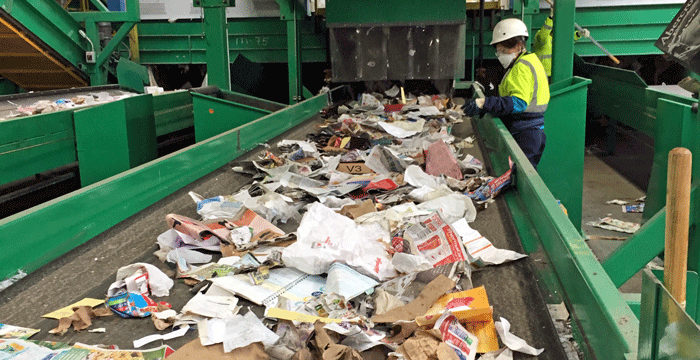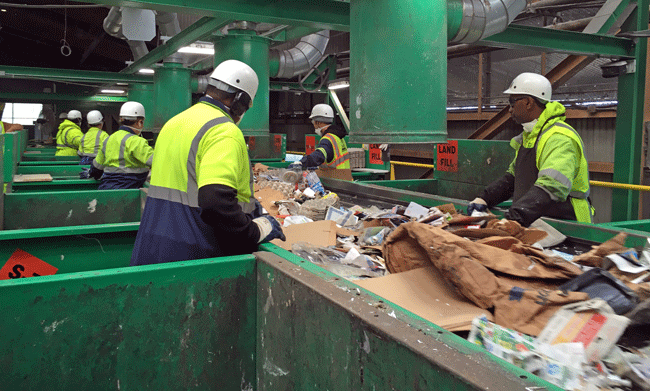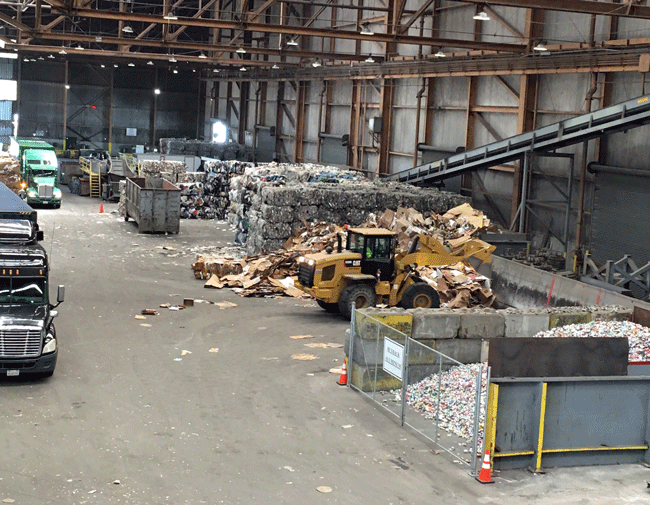
RIP: Recycling is Dead as We Know It
Earlier this year, people learned that Philadelphia is burning half of its recyclables. On NextDoor, people are calling out the sham of recycling, and others are choosing to discard their plastics in the trash to spare Chester of additional
For those wondering when the city will “fix” recycling, I have to break the news to you.
It won’t be. Ever.
The History of Recycling
To figure out where we are today, let’s revisit the history of recycling.
For much of mankind’s history, humans led a zero-waste lifestyle between using every part of food, lack of packaging, reusing kitchen scraps, repairing broken objects and more. We didn’t need to “recycle”, because everything had a use.
Philadelphia folklore often gives a “recycling” reference to the late 17th century Rittenhouse Town. According to Executive Director Chris Owens, “Rittenhouse paper was made from linen rags that were collected from nearby Germantown which was a community of textile weavers.” But as Owens explained,
“It was certainly in keeping with life at the time that nothing went to waste and everything was locally sourced.”
– Chris Owens, Executive Director, Rittenhouse Town
Introducing Plastics into the World
According to the book Plastic: a Toxic Love Story, plastics were created in 1907 by Belgian emigre Leo Baekeland, but boomed in 1941, when plastics like polyethylene, nylon, acrylic
At the end of WWII, plastics began entering every aspect of our daily lives, including our homes, cars, clothing, toys, workplaces, and bodies. As plastics became a convenient solution, Keep America Beautiful was formed by companies like Coca-Cola, Anheuser-Busch,
The beverage industry fought incentives for container reuses like bottling bills, even spending $14 million to defeat the National Bottle Bill between 1989 and 1994
Why does the history of recycling matter?
In 1960, Americans consumed thirty pounds of plastic, compared to over 300 pounds of plastic each year in
The way that “recycling” was sold to the public is a feel-good solution to using single-use plastics. I can use this bottle one time, and it can be made into another bottle! But is it really that easy?
What happens from the curb to the MRF
Once you set your blue recycling bin on your curb and the hauler takes it away, it goes to the MRF, where items are sorted by type. Recently, I visited the San Francisco Recology recycling facility for a tour, so photos and videos are from this visit. (I toured Waste Management in Philadelphia a few years ago, which is a similar operation.)
Items are picked up from the curb, then transported to the MRF (Material Recovery Facility), where items are dumped from the trucks.
There’s an entire line just removing inappropriate items, like plastic bags, plastic film and wood from the stream.

Materials then make their way on a conveyer belt system to sort by material types from their weight, size, magnetic capacity and more.
After sorting these materials, they are bundled into 1-ton bales, ready to be sold to domestic and international markets, depending on their rate.

OK, so that’s what happens if MRFs are recycling.
Where are Philly’s recyclables currently going?
This recycling process at the MRF can be contaminated by liquids, oil and food. In early 2018, China implemented strict recycling rates, only allowing a .5% contamination rate. Philadelphia’s contamination rate is an average of 15-20%.
Currently, 50% of the city’s recycling is going to the Covanta Plant in Chester, and 50% (Northwest/Northeast Philly) is going to Waste Management for sorting.
Where are the materials at Waste Management going if China’s rejecting our recycling?
As John Hambrose, public relations of Waste Management explains, this could vary on a day-to-day basis and can change with markets. “This could vary daily. Materials are brokered to the rest of the world.” But at the time of research in March 2019, here are a few
- Paper is sold to Vietnam or India.
- Plastics 1 or 2 stays in the USA, to be used for carpeting or fleece/products.
- Plastics 3-7 are mixed together and sold as “mixed”, which can be hard to market. 70% of the plastic stream is polypropylene (#5), which are usually in high demand and can be reused easily.
- Corrugated cardboard may be sold to domestic or foreign mills, to be made into boxes or other products.
- Glass tends to be managed locally since it’s expensive to ship. It’s sent to a processor that separates the glass by color and then uses the glass to make new glass packaging and insulation. Glass is often used to make a lightweight “fill” material, currently approved by PennDOT for the I-95 expansion/reconstruction project.
- A large amount of our municipal trash is being processed at waste to energy facilities operated by Covanta in the City of Chester and Plymouth Township and processed at a Waste Management waste to energy facility in Falls Township.
So what does all of this mean for recycling?
Philadelphia has a new recycling contract with Waste Management to begin in May, which will likely take 100% of the city’s recycling again.
But even if we begin “recycling” 100%, it doesn’t mean our items are being used to the best capacity at the end of their life cycle. Now, we know the cycle of recyclables isn’t that circular.
“Each time paper is recycled, it loses some of its value and is recycled into a slightly lower-quality product because the fibers get shorter and less useful. Products like the paper mache egg cartons are the end of the line for paper fibers.”
John Hambrose, Waste Management
That single-use plastic water bottle you drink for a few minutes won’t become another plastic water bottle. Instead, plastic bottles are more often turned into non-recyclable carpets and synthetic clothes.
In order to get out of this recycling mess, we need to limit what we put in the recycling bin in the first place. No matter how much we use, we can’t recycle our way out to less waste.
Every piece of plastic ever created is still in existence. It’s in our oceans, our sea life, in our water, beer and bodies now.
We’re a species that has polluted our own livelihoods with plastic.
What to do about our Recycling Problem.
This problem may seem overwhelming, but we already have answers.
5 Ways to Improve Recycling
- Reduce your plastic use.
- Reuse what you can.
- Buy Local. You’ll avoid a lot of packaging by shopping at farmers markets.
- Compost your food scraps. This will cut recycling contamination and a huge portion of your trash.
- “Recycle” what’s left.
What are more specific actions can you take? Stay tuned for next week’s post for tips.








